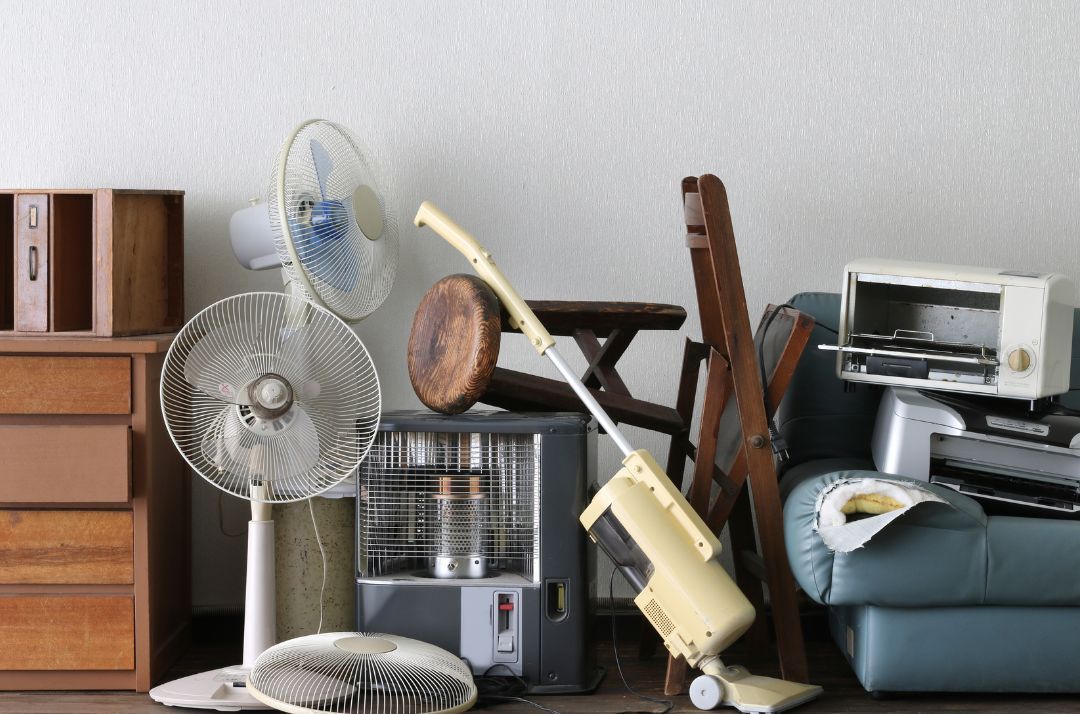Where to Throw Away Furniture
Disposing of old furniture can feel overwhelming, whether you're decluttering, moving, or upgrading your home decor. Bulky items like couches, mattresses, and tables are often too large for regular trash pickup, and improper disposal can lead to fines or environmental harm. This guide covers the best ways to throw away furniture responsibly, including donation, recycling, and professional removal options, so you can clear your space efficiently and sustainably.
Why Proper Furniture Disposal Matters
According to the Environmental Protection Agency, Americans discard over 12 million tons of furniture annually, with 80% ending up in landfills. Improper disposal, like illegal dumping, can result in fines up to thousands of dollars and harm local ecosystems. Choosing eco-friendly methods like recycling or donation reduces waste and supports your community.
1. Donate Gently Used Furniture
If your furniture is in good condition—free of stains, rips, or strong odors—donation is a great option. Many charities and nonprofits accept furniture to help those in need, and you may qualify for a tax deduction.
Where to Donate Furniture
- Goodwill or Salvation Army: These organizations often accept gently used furniture like tables, chairs, and dressers. Check local guidelines, as some locations may not accept upholstered items like couches or mattresses due to hygiene concerns.
- Habitat for Humanity ReStore: Specializes in furniture and home goods, often offering free pickup for larger items.
- Local Shelters or Nonprofits: Contact local homeless shelters, domestic violence centers, or community organizations to see if they need furniture.
- Online Platforms: Websites like Freecycle, Craigslist, or Facebook Marketplace allow you to give away furniture for free to local residents.
Tip: Always call ahead to confirm what items are accepted and whether pickup is available. Clean your furniture before donating to ensure it’s in the best possible condition.
2. Recycle Furniture Materials
If your furniture is damaged or unsuitable for donation, recycling is an eco-friendly alternative to keep it out of landfills. Many furniture pieces, especially those made of wood, metal, or certain plastics, can be broken down and repurposed.
How to Recycle Furniture
- Local Recycling Centers: Search for facilities that accept furniture materials. For example, wood from tables or bed frames can often be recycled, while metal components from chairs or frames may go to scrapyards.
- Municipal Drop-Off Points: Some cities offer recycling programs for bulky items. Check your city’s waste management website for details.
- Upcycling: If you’re crafty, consider repurposing furniture. For instance, turn an old dresser into a TV stand or a coffee table into a garden planter. Websites like Apartment Therapy offer creative DIY ideas.
Tip: Disassemble furniture before recycling to make transportation easier and ensure materials are sorted correctly. Check with your local recycling center for specific guidelines, as some may not accept upholstered items or treated wood.
3. Use Curbside Bulk Pickup Services
Many municipalities offer scheduled bulk pickup days for large items like furniture. This is often free or low-cost, but rules vary by location.
How to Use Curbside Pickup
- Check Local Regulations: Visit your city’s waste management website or call to confirm if furniture is accepted and whether a permit or fee is required. For example, some cities limit pickups to 1-2 items per collection.
- Schedule in Advance: Most areas require you to book a pickup slot, often a week or more in advance.
- Prepare Items Properly: Place furniture at the curb the night before pickup, ensuring it doesn’t block sidewalks or roads.
Tip: Avoid leaving furniture out too early, as this can be considered illegal dumping in some areas, leading to fines.
4. Take Furniture to a Landfill or Transfer Station
If donation, recycling, or curbside pickup aren’t options, you can haul furniture to a landfill or transfer station yourself. This is ideal for heavily damaged items that can’t be reused.
What to Know Before You Go
- Call Ahead: Not all landfills accept furniture, and some have restrictions on items like mattresses or upholstered furniture due to pest concerns. Confirm hours, fees, and accepted items.
- Cost: Expect to pay $10-$50 per ton, plus potential truck rental or fuel costs. Some landfills charge flat fees for specific items (e.g., $20-$40 for a couch).
- Safety: Secure items in your vehicle to prevent accidents during transport. Disassemble large pieces to save space.
Tip: Check for free bulk waste disposal days at your local landfill to save on fees.
5. Hire a Professional Junk Removal Service
For a hassle-free option, professional junk removal services can handle the heavy lifting and disposal for you. This is ideal if you have multiple pieces or lack the means to transport furniture yourself.
Benefits of Junk Removal
- Convenience: Professionals pick up furniture from your home, often on the same day.
- Eco-Friendly Options: Many services, like Iron Bull Hauling, prioritize donating or recycling usable items before landfill disposal.
- Cost: Prices typically range from $100-$400, depending on the volume and location. For example, removing a single couch may cost $80-$120, while a full truckload could be $300 or more.
Tip: Get a quote upfront to avoid surprises. Some services charge by volume, so clarify how much space your furniture will take.
6. Rent a Dumpster for Bulk Furniture Disposal
Renting a dumpster is a cost-effective solution for disposing of multiple furniture pieces or during a home cleanout. It allows you to work at your own pace and toss items directly into the container.
How to Rent a Dumpster
- Choose the Right Size: A 20-yard dumpster is typically sufficient for furniture disposal, costing $250-$500 on average. Larger 30-yard dumpsters are better for bigger projects but may cost $400-$900.
- Check Restrictions: Some areas prohibit mattresses or treated wood in dumpsters. Confirm with the rental company, like Iron Bull Hauling, to ensure compliance.
- Load Smartly: Place heavy items at the bottom and distribute weight evenly to avoid pickup issues. Don’t let items protrude over the top or sides.
Tip: Book your dumpster rental online or by phone for quick delivery, and schedule pickup when you’re done. This option saves time compared to multiple landfill trips.
7. Sell Usable Furniture
If your furniture is in decent condition, selling it can offset disposal costs and give your items a new home.
Where to Sell Furniture
- Online Marketplaces: List items on Craigslist, Facebook Marketplace, or eBay. Be transparent about the condition, brand, and any imperfections to build trust with buyers.
- Yard Sales or Flea Markets: Great for selling multiple pieces quickly, especially if you’re moving.
- Consignment Shops: Some furniture stores accept gently used items for resale.
Tip: Price competitively based on condition and market demand. Include clear photos and details in listings to attract buyers faster.
Avoid Illegal Dumping
Illegal dumping, such as leaving furniture on vacant lots or near public dumpsters, can lead to fines ranging from $500 to thousands of dollars, depending on local laws. Always use authorized disposal methods to avoid penalties and protect the environment.
Clear Your Space with Iron Bull Hauling
Ready to get rid of old furniture and reclaim your space? Whether you need a dumpster rental for a full home cleanout or professional junk removal for a single couch, Iron Bull Hauling has you covered. Contact us today at (540) 315-3052 or fill out our online form for fast, reliable, and eco-friendly furniture disposal services. Let us handle the heavy lifting so you can focus on what matters most!


